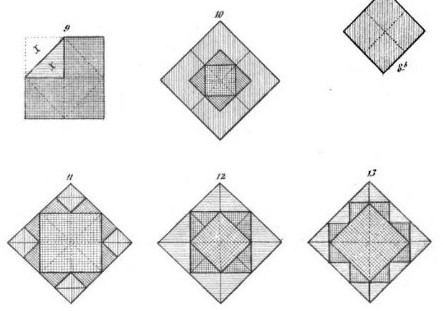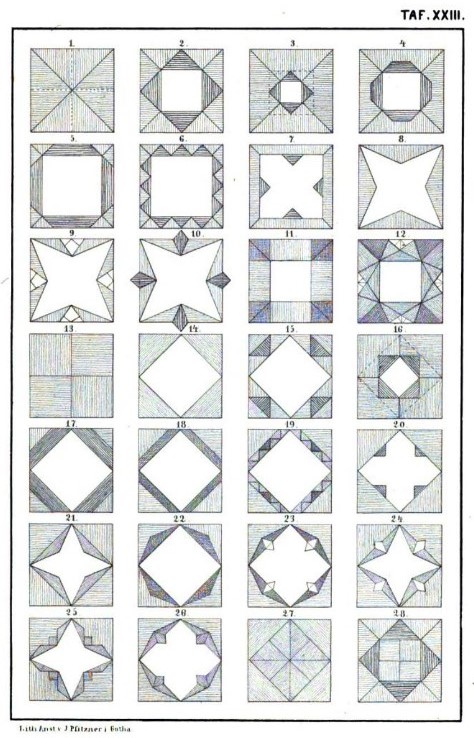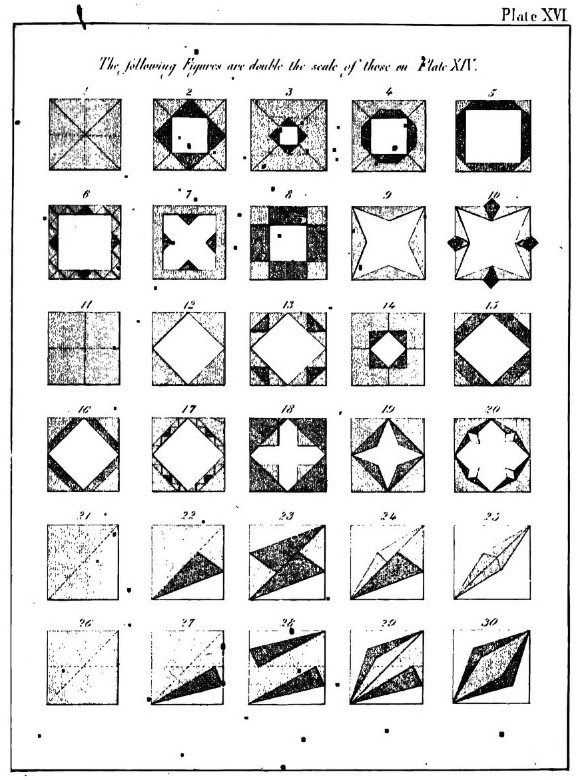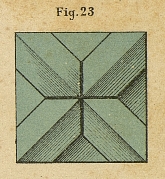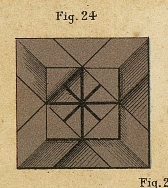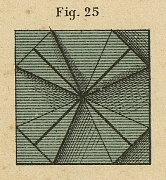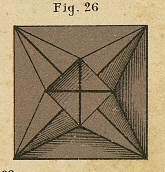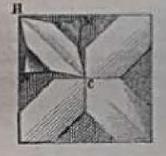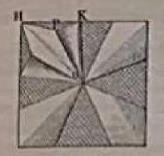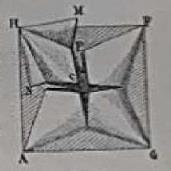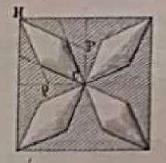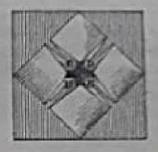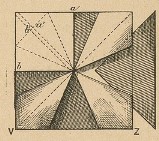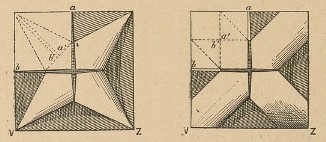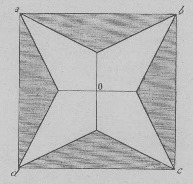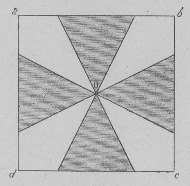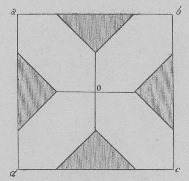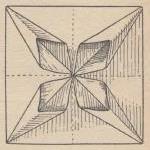| Origami Heaven A paperfolding paradise The website of writer and paperfolding designer David Mitchell x |
|||||||
| Patterns from Squares / Rosaces / Rosettes | |||||||
| This
page attempts to record what is known about the origin
and history of folding decorative patterns from squares.
Please contact me if you know any of this information is
incorrect or if you have any other information that
should be added. Thank you. If the Froebelian tradition such patterns and decorations are known as Folds of Beauty. In the French manual work educational tradition they were commonly referred to as 'rosaces' which I translate as Rosettes. ********** Patterns from the Singly Blinzed Square ********** Patterns from the Doubly Blintzed Square (ie blintzed, turned over and blintzed again) 1859 'Manuel pratique des jardins d'enfants de Frédéric Froebel', which was compiled by J F Jacobs and published by F Claassen in Brussells and L Hachette and Cie in Paris in 1859, contains drawings of four such patterns, two from one side and two fromthe other.
********** 1873 'Die Praxis Des Kindergartens' by Auguste Koehler, which was published by Herman Bohlau in Weimar in 1873, contains a section headed 'Schouheitsformen' (Forms of Beauty) which includes a page of patterns developed from the square. Pictures 1 and 13 show the two sides of the Double Blintz basic form from which patterns 2 to 12 and 14 to 28 can be derived. Pictures 27 and 28 show two more complex groundforms from which other patterns can be derived.
********** 'Exercices et Travaux pour les Enfants Selon la Méthode et les Procédés de Pestalozzi et de Froebel' by Fanny and Charles Delon, which was published by Librairie Hachette in Paris in 1873, contains illustrations of five such patterns, three from one side and two from the other.
********** Patterns from the Windmill Base 1873 'Exercices et Travaux pour les Enfants Selon la Méthode et les Procédés de Pestalozzi et de Froebel' by Fanny and Charles Delon, which was published by Librairie Hachette in Paris in 1873, contains illustrations of Rosettes 1, 2 and 3.
********** 1877 A page of patterns derived from the two sides of the Double Blintz Basic Form c found in 'Kindergarten Practice' by Mary Gurney, a substantially abridged version, in two parts, of 'Die Praxis Des Kindergartens' by Auguste Koehler. The second part, 'Froebel's Plane Surfaces', contains sections dealing with paper folding, cutting and weaving. The date of the first edition is not known. The second edition was published in 1877 in London by A N Myers and Co.
********** 'Cours de Travail Manuel (Pour les Garcons) - Premiere Partie - Cours Elementaire' by A Planty, which was published by Gedalge Jeune in Paris in 1887 contains instructions for making four rosettes from the windmill base. une jolie rosace / Rosette 1
*** 3e rosace / Rosette 1a (variant)
*** Rosette 2a
*** 4e rosace / Rosette 3a
********** 1891 There are references to rosaces folded from squares, but no illustrations to allow them to be identified, in the 'Bulletin de la Societe de Protection des Apprentis', an official document issued by the Societe de Protection des Apprentis et des Enfants Employes par les Manufactures in Paris in 1891. ********** 1892 'Le Travail Manuel a L'ecole Primaire' by Jully & Rocheron, which was published by Librairie Classique Eugene Belin in Paris in 1892, contained instructions for making several decorations derived from the windmill base under the title 'Rosaces a 4 pointes'. Rosette 1
*** Rosette 2
*** Rosette 3
*** Rosette 4
*** This section also explains a way of mounting two windmill bases (one folded from paper half the size of the other) inside each other and that the various rosettes can then be folded from the smaller base.
********** 1895 Rosettes 1, 2 and 3 also feature in 'L'enseignement manuel dans les ecoles du degre primaire (garcons)' by Rene Leblanc, which was published by Librairie Larousse in Paris in 1895.
********** The same three designs appear in 'Geometrie, Dessin et Travaux Manuels - Cours Moyen', produced under the direction of M E. Cazes, which was published by Librairie Ch. Delagrave in Paris in 1895.
********** 1910 'Distractions Enfantines' by Marie Koenig, which was published by Librairie Hachette et Cie in Paris in 1910, explains how to make a Jewellery Box covered in simple windmill base decorations and how to develop this decoration into a Golden Frame. ********** 1940 A design called 'Cuadrado Imbricado Roseta' appears in 'El Plegado y Cartonaje en la Escuela Primaria' by Antonio M Luchia and Corina Luciani de Luchia, which was published by Editorial Kapelusz in Buenos Aires in 1940
********** |
|||||||
